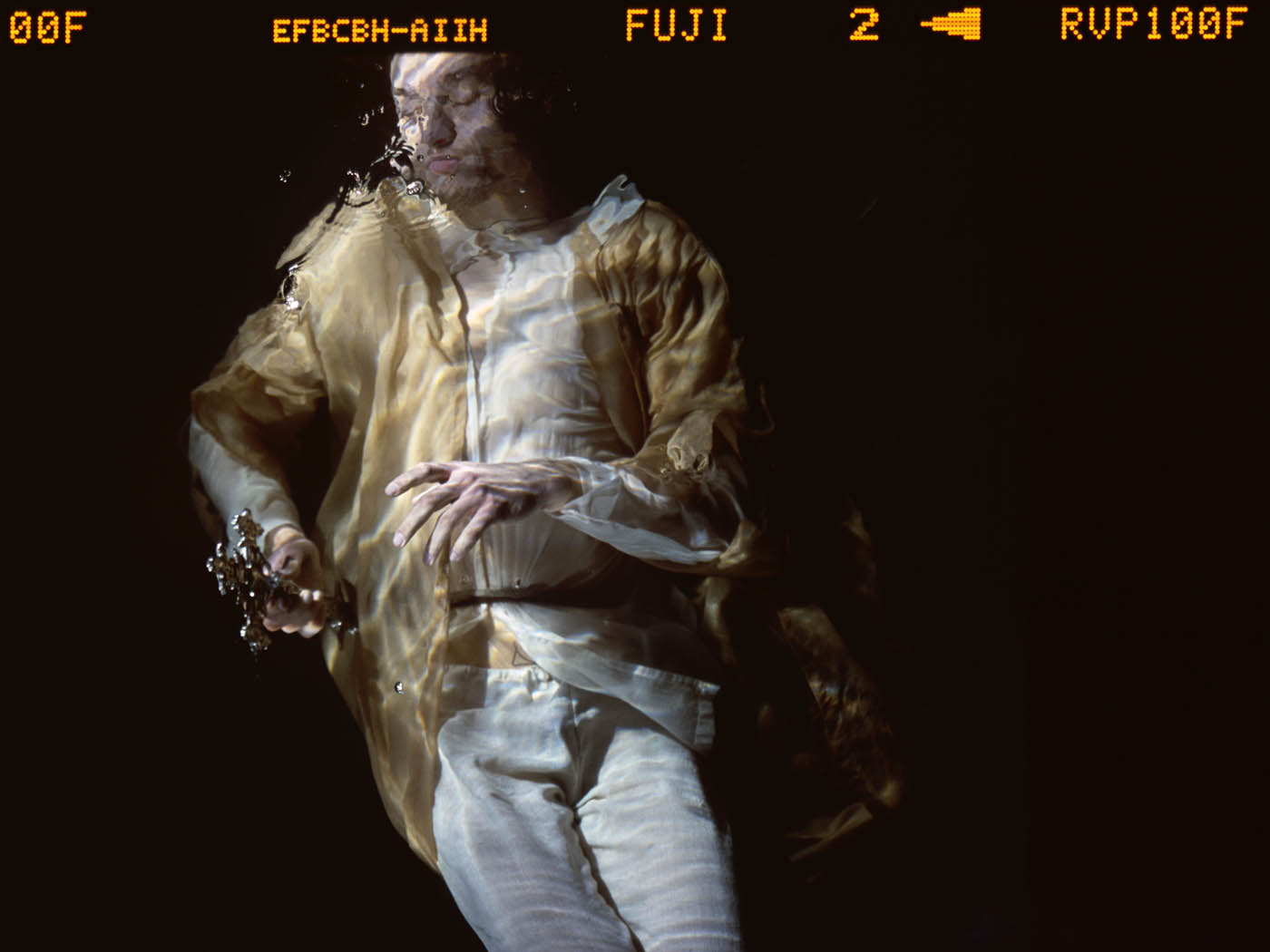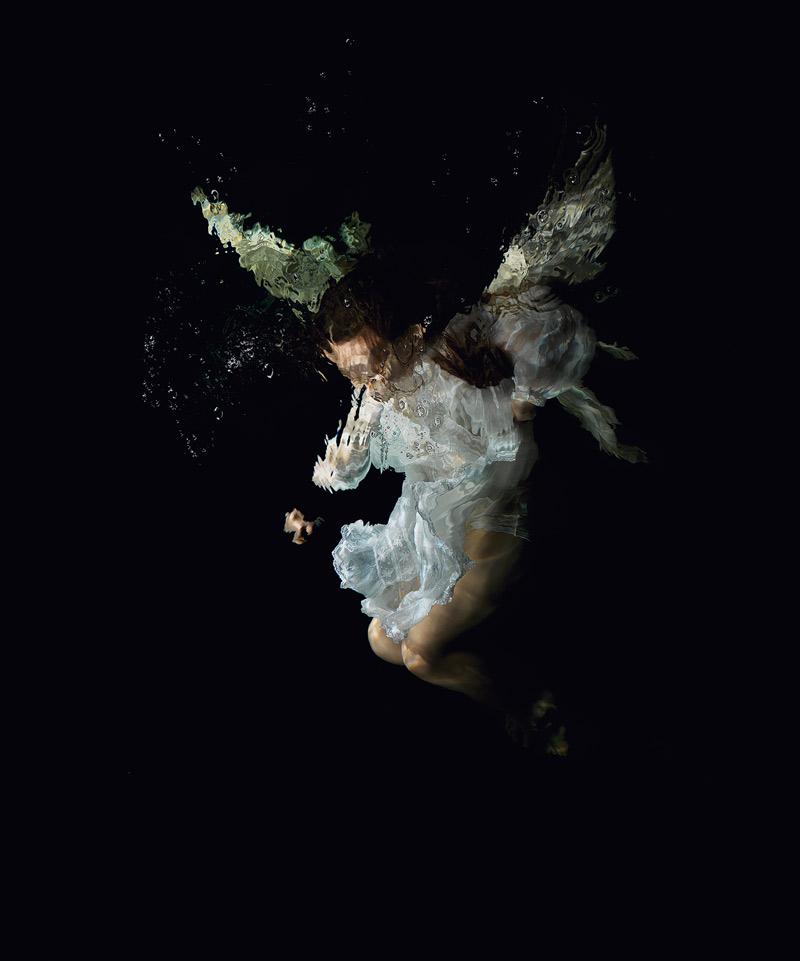an academic text for the exhibition Rastvorennaya Pechal written by Andrei Tolstoy nee Leo Tolstoy
Author: Distil Ennui | Post Date: 25-04-2014Ever since the time when it arose in the 1830s, photography has experienced a certain inferiority complex with regard to painting. Naturally, this complex has not remained immutable — over time, photography acquired the ability to achieve special textural and compositional effects that brought photographs and painted works closer together. A special term was even invented, ‘pictorealism’ which stressed this convergence and there has been a recognised blurring of the borders between the photograph and the painting. Later still, photography gained colour, along with a multitude of opportunities to convey its tones and nuances, ‘solarization’ and inversion. As the art of photography matured and its instruments and tools were perfected, the two began to swap places to a certain extent. Painting, freed at the end of the 19th century by photography from its need to comprehensively reproduce the visible world in the forms perceived by the human eye, and thus giving a previously unheard of freedom of individual and, consequently, subjective expression to the artist, began increasingly, as it were, to “envy” the evermore complex technical capabilities of photography, such as shooting with prolonged exposures, with special lenses and similar cunning approaches. And that’s without even mentioning the endless opportunities opened up in the achievement of an increase in expression through motion film. As a result, painting put forward its own modes for the Cubist combining of several points of view on one and the same object and Futurist decomposition of movement into phases in order to convey the internal logic of the form and its internal and external dynamic in the virtual space of the avant garde work constructed by the artist. Painting methods and modes in contemporary photography, whether it be today’s more widespread digital photography or increasingly rare analogue photography, with shots transposed onto film. The most accepted and prized, as a rule, are not those achieved with chemical, physical or computerised means, which is to say that the developed negative or resulting positive is altered through these processes (what we might in this case call a distinctive “post-production”); instead, it is those works created with special, sometimes painstaking preparatory work carried out before exposing film that is prized. In this case, the creative process of the photographic artist recalls the troubled journey of a painting from the initial idea for a work, through a series of studies and sketches, to the work’s logical conclusion, akin to the concluding chords in the finale of a musical phrase much akin to a sonata or opera. The style of Alexander James’s recent works aims towards the preservation and reconsideration within the photographic artwork of the characteristic expressive means from paintings of old. In certain still life's, carried out with a thorough knowledge and genuine love for the texture of wide ranging materials (often preparing by creating sculptural models and objects to be used as props) and the metaphysical and symbolic functions of the depicted objects which serve as key elements that provide the entire composition with a cautionary-didactic sense (as described by the word vanitas), James is clearly recalling de Zurbaran and his followers, and also the Surrealists (the ‘Vanitas’ series, 2008–2013; and ‘Swarm' series). This is expressed, first and foremost, in a particular precision, the focusing of the optics, which makes all of the components in the compositional whole “palpable” in a certain inexpressible sensuality, then brought as close as possible to the viewer, who can do nothing other than struggle against the temptation to touch the surface of the photograph. Provocative effects of this kind are deeply coded in the artist’s concept. Nevertheless, he often says: “I don’t think about aesthetics – they’re born instinctively in the process of creation.”

'Torment' dated 2014. 90 x 67 cms C-Type Print
Single Edition of I+ II Artist Proofs ( each a differing size and execution)
Alexander James’s Russian project, ‘Distil Ennui’, is constructed on an series that he has already tried — working on complex scenes submerged in purified water. The technique achieves a unique visual volume, the artist resorts to imposing a transparent, light layer of paint brush activation directly onto the surface of the water, in order to achieve a distinct “painterly” effect. This time, recalling the renowned canvas by John Everett Millais, ‘Ophelia’, and ‘Le Jeune Martyr’ by Paul Delaroche, James has created a series of works in which the figures of young, men, women, and children are captured floating freely in a stratum of water. This layer of water functions in each work as a special filter, transforming everything. The faces are covered over in ripples, they blur, sometimes they can’t be made out at all. The fabric of bright colours, in which the bodies of the individuals are wrapped, or the clothing of an indeterminate-romantic style in which they are dressed, under the water is made up of incredibly intricate, but always smooth, as in a slow-motion film, streaming folds and wrinkles. The continual and reciprocal shifting of lit and shadowed sections across the faces and bodies of the models, defined by the natural movement of underwater flows and eddies that can’t be made out by the naked eye, give the images a mysterious and enigmatic but genuinely painterly character that is stressed by the black, neutral background against which each figure stands out so effectively. Each figure is enclosed within themselves, forming their own individual space located on a conditional and unstable border between the real world and a fantastical vision, between reality and a dream. The refraction of the light and the colour under the layer of water makes each ray of light and each colour accent not only like a free stroke that virtuoso masters of the brush were capable of in their day, but also like the shifting texture of the paintings of the Impressionists and the internal dynamic structure of Expressionist canvases. Photography as an art, in this way, reciprocally exchanges roles with painting as an art form through complex process and, moreover, both of them, it appears, are inspired by the visual discoveries of art house cinema.

Fall of Heratculus' dated 2014. 60 x 45 cms C-Type Print
Single Edition of I + II Artist Proofs ( each a differing size and execution)
>>> Thank you for reading, please lets stay connected.
>>> discover more about projects & exhibitions here on the journal.
Allusions to the images and characters of renowned paintings by the masters of the past, in almost every work are far more multifarious than Alexander James himself claims — in this project he has concentrated his wide-ranging visual experience, including his unconscious experience. The models in certain pictures sometimes apparently by chance adopt archetypal poses such as those of the classic figures of Sacred history (sometimes this intuitive sense is supported by a limited number of attributes — angel’s wings on a child, a youth’s Christian crucifix) and the recognisable characters of all manner of genre scenes. And all of this, in their day, was seen by and framed up by the masters of various countries and eras — the Italians of the Late Renaissance and Mannerism, the French, the Dutch and the Flemish of 17th century Baroque, the Classicists of the 18th century and the French and the Spanish Romantics — and so on to the the very end of the 19th century. What should also be stressed is that the analogies and the allusions in these compositions by the artist are not only unquestionable and recognisable, they also, albeit not always unambiguously and obviously, turn out to be even deeper than is claimed by their author himself, who with passion and brilliance working in the photographic medium doesn’t think to conceal his admiration and fundamental knowledge of the art of painting. This admiration and knowledge, however, are not a matter of unthinking delight, being more akin to a mournful wisdom (‘in much wisdom is much grief’). It is from here that the title for Alexander James’s Russian project arises — ‘Distil Ennui’.

'Mycenaean I' dated 2014. 120 x 90 cms C-Type Print
Single Edition of I + II Artist Proofs ( each a differing size and execution)
So, spectators at the exhibition will have the opportunity to take part in a fascinating interactive action of a dual type. On the one hand, it is not unlike a quiz or parlour game that tests the spectator’s knowledge of world art; on the other, it is like a competition during games of association, but a competition where rather than the speed of recognition or the identification of prototypes, it is the convincingness and the grounds for a certain associative series that is being tested. In both cases it transpires that the game is an extraordinarily important foundation for the culturally creative act that is carried out through the activation of visual memory. As Johan Huizinga wrote in his famed composition ‘Homo Ludens’, without the support of a certain degree of play in people’s behaviour, culture is in principle impossible… Andrey Tolstoy; (born 1956) grandson of the Russian powerhouse Leo Tolstoy An academician of the Russian Academy of Arts. Director of the Theory and History of the Visual Arts Research Institute at the Russian Academy of Arts. Tolstoy is a specialist on Russian art of the 20th and 21st centuries, as well as on Russian art’s creative links with Europe in the Early Modern and Contemporary periods and on the art of Russian artist-émigrés in Europe and America in the 20th century. Author of over a hundred academic publications on these themes in Russian, English, French and Italian, released in Russia, Great Britain, France, Italy, Switzerland, Germany, Poland and the USA. you can download the Triumph Gallery catalogue in which this text appears HERE.